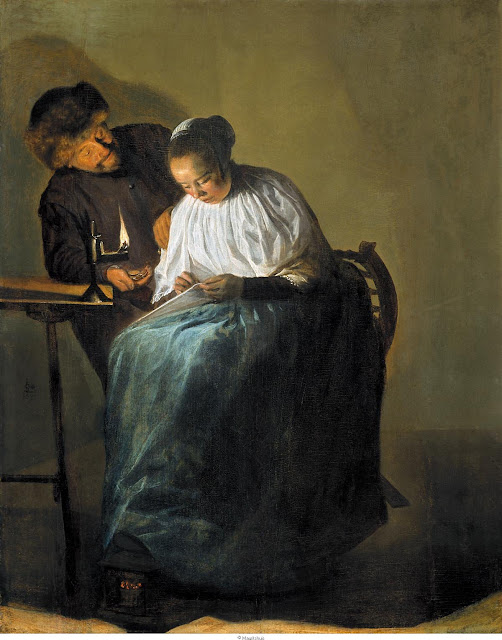All you art lovers should be familiar with the names of the Impressionist painters of Monet, Renoir, Pissarro and Sisley. But are you familiar with the works of Berthe Morisot? All you art lovers should be familiar with the Dutch master painters Rembrandt, Vermeer and Frans Hals. But are you familiar with the works of Judith Leyster?
Berthe Morisot identified herself as an impressionist, that group of 19th-century French artists who rebelled against the Salon and the academic works exhibited there. Associated with Monet, Renoir, and Degas, Morisot was included in all but one of the impressionist exhibitions held between 1874 and 1886. Although associated with the renegade group, as a woman Morisot often escaped the unfavorable judgments the other artists received. Most 19th and 20th-century critics focused on the "feminine" qualities in her work: intuitiveness and delicacy. Morisot is generally considered one of the most important woman painters of the late 19th century.
Morisot achieved significant recognition during her lifetime. Her work was included in George Petit's International Exhibition and in Paul Durand-Ruel's exhibition of impressionist painting in New York, both in 1887. She was married to Eugène Manet, although previous to her marriage, she was romantically involved with Édouard Manet; the famous painter was her soul mate, but unfortunately married to someone else.
Her works can be found in the museums in Paris and around the world:
Woman in a Garden in the Art Institute of Chicago
In the Garden at Maurecourt in the Toledo Art Museum
Judith Leyster was born in 1609 into the family of a brewer in Haarlem, a town just outside of Amsterdam. She is one of the very few women to be accepted as a member to the Haarlem Guild of Painters--the only woman master-painter of her day and one of the few women artists of the 17th-century to earn her living as a painter. Although she was highly esteemed by her contemporaries, she remained unknown for a long time and her works were either believed lost, or were attributed to the famous Haarlem Dutch painter Frans Hals. Judith was believed to be Hals’ pupil; she worked in his studio in Haarlem in about 1630; at that period she tried to follow his style.
Her work was clearly influenced by the content and style of genre paintings created by Frans Hals. Like them, Leyster had a talent for painting lively scenes of people enjoying themselves in taverns, playing music, and the like. Such subjects were very popular with Holland's newly prosperous middle class, the principal buyers of contemporary Dutch art.
Leyster produced most of her paintings between 1629 and 1635; her artistic output decreased dramatically after her marriage in 1636 to the painter Jan Miense Molenaer. The couple soon moved to Amsterdam and had at least five children. By 1649 the family was back in Haarlem, where Leyster spent the remainder of her life.
Although well known during her lifetime, Leyster and her work were largely forgotten after her death until 1893, when a painting acquired by the Louvre was found to have Leyster's distinctive monogram (her initials entwined with a five-pointed star) hidden under a false signature reading "Frans Hals." This discovery led to renewed research and appreciation of Leyster's oeuvre, which had previously been confused with that of Hals.
Her works can be found in several museums in Netherlands:
Monsieur Pekelharing at the Frans Hals Museum © Frans Hals Museum

Serenade at the Rijksmuseum © Rijksmuseum
Man Offering Money to a Young Woman in the Mauritshuis ©Mauritsuhuis





No comments:
Post a Comment